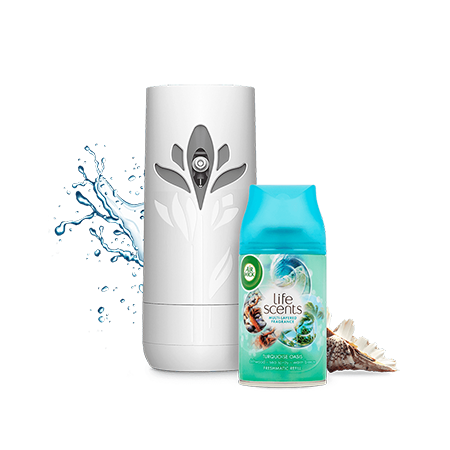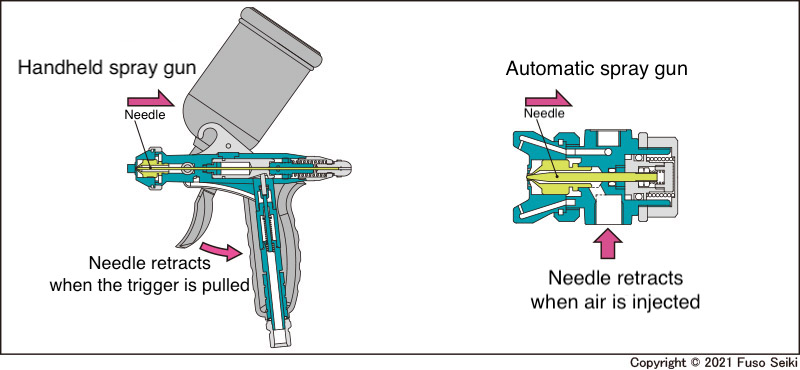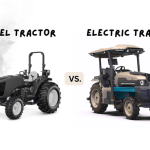Have you ever wondered how to make your gardening or farming tasks more efficient? Automatic sprayers might just be the game-changer you need.
Imagine effortlessly covering large areas with precision and saving time while achieving perfect results. You’ll discover the different types of automatic sprayers and understand exactly how they work. Whether you’re a gardening enthusiast or a farming professional, understanding these tools can enhance your productivity and give you the results you desire.
Keep reading, and you’ll unlock the secrets to a more efficient and effective approach to spraying. Get ready to transform the way you work!

Types Of Automatic Sprayers
Automatic sprayers have transformed various industries with their efficient spraying techniques. These devices offer precise control, minimizing waste and maximizing effectiveness. Understanding the different types of automatic sprayers can help in choosing the right one for specific needs. Each type caters to different applications, ensuring optimal performance in diverse settings.
Automatic sprayers come in various types, each suited for specific tasks. Knowing these types aids in selecting the ideal sprayer for your requirements.
Conveyor Belt Sprayers
Conveyor belt sprayers are common in manufacturing settings. They are used for applying coatings evenly as products move along a conveyor. This ensures uniform application and speeds up production. Ideal for high-volume operations needing consistent results.
Robotic Arm Sprayers
Robotic arm sprayers provide flexibility and precision. They can reach difficult areas and adjust to complex shapes. Often used in automotive and aerospace industries. These sprayers offer high accuracy in application.
Airless Sprayers
Airless sprayers are perfect for large surface areas. They use high pressure to atomize the paint, ensuring a smooth finish. Commonly used in construction for walls and ceilings. They deliver quick coverage with minimal overspray.
Electrostatic Sprayers
Electrostatic sprayers charge particles to adhere to surfaces effectively. This reduces waste and increases coverage. Used in agriculture and cleaning, they ensure comprehensive application. Suitable for disinfecting and pesticide tasks.
Components Of Automatic Sprayers
Automatic sprayers simplify the task of applying liquids evenly. They are efficient and save time for users. Understanding their components helps in proper usage and maintenance. Here, we explore the essential parts of automatic sprayers.
1. PumpThe pump is the heart of the sprayer. It moves the liquid from the tank to the nozzle. Most pumps are powered by electricity or batteries. They ensure steady liquid flow during operation.
2. TankThe tank holds the liquid to be sprayed. It varies in size, depending on the sprayer type. Tanks are usually made of durable plastic or metal. Easy-to-clean tanks enhance the sprayer’s longevity.
3. NozzleNozzles control the spray pattern and droplet size. Different nozzles suit various applications. They help achieve uniform coverage. Regular cleaning of nozzles prevents clogging.
4. HoseThe hose connects the tank to the nozzle. It ensures smooth liquid transfer. Durable hoses resist wear and tear. They should be flexible for easy maneuverability.
5. Control ValveThe control valve regulates the liquid flow. It allows users to start and stop spraying. Proper maintenance of the valve ensures efficient operation. It provides precision in spraying tasks.
6. Battery or Power SourceMost automatic sprayers rely on a power source. Battery-powered sprayers offer portability. Electric sprayers require a power outlet. Regular battery checks ensure uninterrupted operation.
Understanding these components helps in choosing the right sprayer. It also aids in troubleshooting and maintenance.
How Automatic Sprayers Operate
Automatic sprayers efficiently distribute liquids using sensors and timers. They come in various types, like battery-powered and manual. Each type ensures consistent coverage, making them ideal for gardens and agriculture.
Understanding how automatic sprayers operate can make a significant difference in how effectively you use them. Automatic sprayers are designed to make tasks easier and more efficient. Whether you’re gardening, sanitizing surfaces, or painting a room, knowing how these devices work can save you time and effort. Automatic sprayers have several key components, each playing a vital role in their operation. These include a pump, a reservoir, a nozzle, and a power source. The pump draws liquid from the reservoir and pushes it out through the nozzle. The power source, often a battery, drives the pump. The nozzle controls the spray pattern and size. Some sprayers come with adjustable nozzles, allowing you to customize how the liquid is dispensed. This flexibility is crucial when dealing with different tasks that require varying spray intensities.Pressure And Flow Regulation
Pressure and flow regulation are essential for precise spraying. Most automatic sprayers allow you to adjust the pressure to suit the task at hand. Lower pressure is ideal for delicate tasks like watering seedlings. Higher pressure is suitable for tasks like applying pesticides over a large area. The flow rate determines how much liquid is released per minute. Adjusting this can help you conserve liquid and reduce wastage. Imagine trying to spray a delicate plant with a heavy flow – it could damage the plant.Power Source Options
Automatic sprayers are typically powered by batteries or electricity. Battery-powered sprayers offer mobility, making them perfect for large areas without power outlets. They are often lightweight and portable. However, you need to ensure the batteries are charged. Electric sprayers, on the other hand, offer continuous power without needing recharges. They are ideal for tasks that require extended periods of spraying. Always consider your specific needs when choosing between these power options.Automation Features
Many modern sprayers come with automation features that enhance convenience. Timers can be set to spray at specific intervals, ensuring consistent application without manual intervention. This is particularly useful in large gardens or farms. Some sprayers are equipped with sensors that detect moisture levels or the presence of pests. These sensors can trigger spraying automatically, optimizing resource use. This tech-savvy approach not only saves time but also ensures precision.Maintenance And Care
Keeping your automatic sprayer in top condition is crucial for its longevity and performance. Regular cleaning prevents clogs in the nozzle, ensuring smooth operation. Check and replace worn-out parts like seals and hoses as needed. Storing the sprayer properly when not in use prevents damage. If it’s battery-powered, remove the batteries if you’re storing it for a long time. A little care goes a long way in maintaining your sprayer’s efficiency. Do you find yourself frustrated with manual spraying tasks? Investing time in understanding your automatic sprayer can turn it into a reliable partner for your needs.
Benefits Of Using Automatic Sprayers
Automatic sprayers offer numerous advantages for both professionals and hobbyists. These devices simplify the process of applying liquids, saving time and effort. They ensure a more precise application, leading to better results. Let’s explore some key benefits of using automatic sprayers.
1. Consistent Coverage
Automatic sprayers deliver a uniform spray pattern. This ensures even coverage of the surface. It reduces waste and enhances efficiency.
2. Time-saving
Automatic sprayers work faster than manual methods. They cover large areas quickly. This saves valuable time, especially in big projects.
3. Precision And Control
These sprayers offer adjustable settings. Users can control spray intensity and direction. This precision helps achieve desired results.
4. Reduced Physical Strain
Using an automatic sprayer minimizes physical effort. It reduces the need for repetitive manual actions. This makes the task less tiring and more comfortable.
5. Versatility
Automatic sprayers can handle different liquids. From water to chemicals, they are adaptable. This versatility makes them useful for various tasks.
6. Cost-effective
While the initial cost may be higher, long-term savings are significant. Reduced waste and faster application lower overall expenses.
7. Enhanced Safety
Automatic sprayers limit direct contact with chemicals. This reduces exposure risks. Users benefit from a safer working environment.
8. Environmental Benefits
Efficient sprayers reduce over-application. This minimizes runoff and environmental impact. They contribute to sustainable practices.

Conclusion
Automatic sprayers offer various types for different needs. They simplify gardening and farming tasks. Understanding their operation is essential. It ensures efficient use and maintenance. Manual effort reduces with these devices. Saves time and energy. Suitable for large or small areas.
Cost-effective in the long run. Choose the right sprayer for your needs. Consider size and purpose before buying. Proper use ensures better results. Automatic sprayers enhance productivity. Make work less strenuous. A valuable tool for any gardener or farmer.



